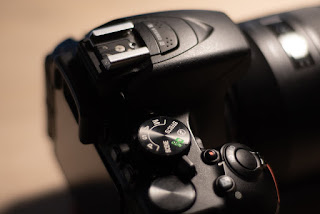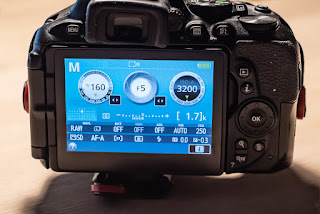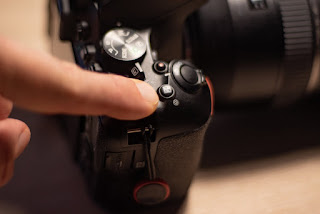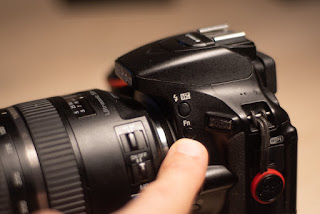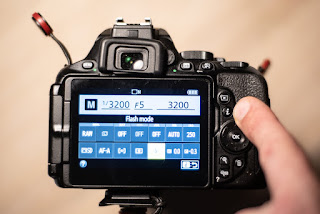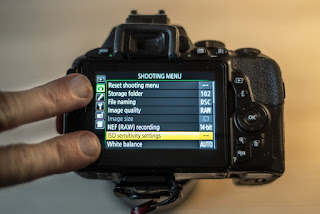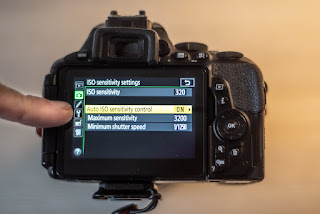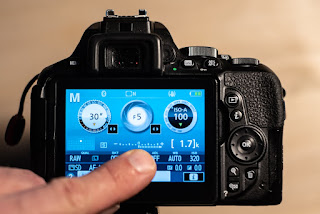Photography on a budget
Photography gear is expensive. Maybe not as expensive as gear for playing golf, but close. The list of gear required seems endless (camera, lenses, bags, straps, grips, light, flashes, tripods, backdrops, stands, etc) and the photography gear industry keeps pushing new products on the markets that is better that the previous generation; higher, faster, longer…
All this meets your limited budget. Unless you are Rockefeller or one of the original investors in Apple, you – like me – is on a limited budget to optimize within. But do not despair – there is hope. The good news is that you can get started with good gear without breaking the bank. All it takes is a bit of thinking on your side – and a few tips from someone who has learned to optimize the hard way (that would be me!).
A lot of time we are driven by emotions: it feels really good to unbox a brand new piece of camera equipment and know that no one before you has used this gear. And flashing the latest camera model on the local cafe while sipping a cafe latte may feel great, but it comes at a price. So if you want to get the max bang for your buck, you will need to think more and feel less. It is not sexy. But being on a budget seldom is.
Know yourself
This is probably as boring as it gets, but it is my best advice: know yourself as a photographer. When I was brand new to photography, I was really struggling to understand what type of photography I would be doing, i.e. would it be: Friends and family, portraits, landscapes, astro photography, still life, products, lay flats, events (weddings, birthdays), sports and action, wildlife, video, etc
If you are new to photography, you may be struggling to figure out what you will be shooting. I did. I took a major detour around birds photography, including buying a long and very expensive lens, before I realized that this was not for me. I was not good at it, and most importantly: I did not enjoy it.
The reason why it is important to know what you will be shooting is that it drives the requirements to the gear. If you are shooting sports and wildlife and other fast moving subjects, then auto focus and frames per second is ABSOLUTELY vital. If you are shooting landscapes, you probably could not care less. So paying for gear that has great auto focus capability when you are a landscape photographer is money out the window. You are paying for functionality you do not need. You want to spend your money on functions and features that are important to you.
So write down a list of things that are important to you. And make the list prioritized. What can you cave in on, i.e. what is only nice to have? What is absolutely need-to-have? Try lending or borrowing gear aimed at a specific type of photography, and see if it works for you.
Buy dated
Have you ever noticed that from time to time, the car producers suddenly seem to be very friendly and sell you their cars with lots of extras at almost no additional costs? Are they being friendly? Of course not, it is business as usual. They have a new model coming. Everybody knows it. The car reviewers have already been test driving the new model, you have probably been reading about it and everybody wants the new version with the new improved design and features. But what about the car factory? They still produce the old car for some time while this is going on – how are they to continue to sell a model that everybody knows is about to be replaced with a new one? The answer is to pump the last copies of the old version that leaves the factory with lots of extras, and sell them at the same price as before. So you can make a good deal, provided the prestige of having the latest model is not your thing.
When you are on a budget, you cannot afford prestige. It is as simple as that. The sooner you accept this fact, the faster you can start to optimize your budget. Yes, the manufacturers will argue that the latest version of their camera now shoots x+2 frames per second, where the previous version “only” shot x. And they are right. It is an improvement. But check the list of things that are important to you: is the improved features important to you?
The camera manufacturers know that a lot will simply buy the latest version of their camera by default – wealthy enthusiasts, prosumers and professionals that can optimize their workflow with the improved features. So they set the intro price to skim the market. This is not where you want to be, if you are on a budget. Wait. The price will drop, both on the new version and on the previous. Not to mention the version 2 or 3 generations back.
This brings me to the second advice I have for you on a budget: never buy the latest version – always buy dated. Go as far back as you can in terms of versions, looking at the list of things that are important to you. Be careful not to cave in on your requirements – you will regret it, but try to see if there is an (older) camera model that meets your requirements still. You will save a lot of money, and still get what you are after.
Buy used
Buying used is not fun in my opinion – I love the unboxing of something brand new and the feeling that I touch something (almost) as the first in the world. But it is an expensive feeling to say the least!
Buying used also introduces a risk, that the goods you get are not in perfect condition. You may not know the history of what you are buying – has the camera or lens had a rough life? How many years are left in the gear when you get it? Is there a scratch in the lens or maybe fungus? And so on. But if you buy via your local photo shop (yes, they often have used gear along with brand new gear) or buy via the big e-channels like e-bay and amazon, then you have options to make complaints and return the goods if you are not satisfied with your purchase. Check the specific conditions in your case. And go for the vendors that have good ratings – they probably want to continue to have good ratings, i.e. they don’t want you to be an unhappy customer.
So buying used via a “serious” channel mitigates the risk of buying used gear. That said, my third advice to you on a budget is: buy used if at all possible. I have bought MANY used vintage lenses on e-bay and amazon, and trust me, you will get the hang of it after a few purchase. I find that especially lenses and vintage lenses are a great way to save money – you get lenses of a quality you could never afford from new, if you look carefully you will get a lens that is as good as it was when it was brand new and you can probably later sell the lens via e-bay again, should you grow tired of it.
Garage sales or flee markets is another source of used gear. The advantage here is that you are not necessarily dealing with a professional salesperson, i.e. they do not know the true value of the gear they are selling. I have heard of many who have bought vintage lenses for a few dollars, pretending that they were interested in the camera the the lens sat on! There are made millions of copies of great lenses the last 50-60 years and many of those probably sit in a garage sale or flea market somewhere, waiting for you to pick it up!
Study the market
Dad jokes aside, study the market to see if you can find the sweet spot. All things being equal, the more you invest, the better gear you most likely will get, but the investment has diminishing returns. It is like when the farmer adds fertilizer to the soil – at some point the effect starts to decline. In the beginning you will get a lot of extra for adding a dollar more, after adding many dollars, an additional dollar has little effect. That is probably why there are more Volkswagen than Bentleys out there.
Speaking of studying the market, if you have zoomed in on a certain product that you consider buying, make sure to study reviews. And not just one or two. Study MANY reviews. Both those on Youtube and those in writing. You will be surprised how many opinions there are out there. And how much peoples opinion differ – probably because their list of priorities differ. And you will quickly learn which channels are systematic and serious and which are more entertaining. So take your time to study the market and use many sources. No hasty decisions – there will be a new black Friday coming up. Informed decisions are the best.
What is available today is amazing!
You may feel that you are missing out on a lot of new features like faster auto focus, more megapixels and so on. But find comfort in the fact that almost all the picture that are famous today (like the ones from Henri Cartier-Bresson) were taken with cameras and gear that is nowhere near the technical capabilities of a 3-4 year old camera on the market today. So unless you are in the photography game for technical reasons and like to get hold of all the engineering behind the modern camera, you will find that you can take some absolutely astonishing and great pictures with a 5 or even 10 years old camera. If you don’t believe me, try googling for blogs about the Nikon D700. I have never owned such a camera, but those who have absolutely love it and often claim that – if they have sold it – it was the best camera they ever had and that they regret to have sold it every day since.
What no camera manufacturer will ever tell you, and most youtubers seldom, is this: all the cameras on the market today are good cameras! Why? If a really bad camera came out, the word would spread on social media with lightening speed, and sales would decline almost immediately. So if a camera manages to “hang in there” and get a crowd of happy users, it is probably because it is not doing too bad!
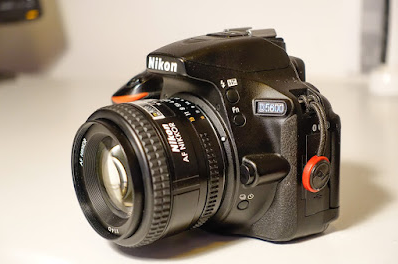
So find comfort in the fact that the camera that you may already have is not so bad at all! Also, the speed by which product manufacturers push new models to the market has increased dramatically over the last 10 years, so only those that do reviews of cameras and maybe professionals that really need the latest features of a new camera to optimize their workflow, have a rational need for the latest generation of a camera. The rest of us are just will do fine with a camera that is 2-3 years old, like the Nikon D5600 in the picture above. It is a DSLR (not mirrorless), it is not the latest and greatest and it has been around for some time. But it is a very solid performer, you can get one at a very fair price (especially used) and it will probably serve you for many years with good pictures. You can see the conclusion from the dpreview of the D5600.
Try before you buy
You will be surprised how much you can learn about a camera just holding it and using it for a few minutes. It tells a lot more than reading many reviews, although I also recommend you do that.
So if at all possible, see if you can get your hands on the gear you want to buy without buying it. See if your local camera store, friends / family or the camera club / association in your area can give you hands-on access to whatever you are in the market for. In my experience, ergonomics is one of the areas that matter the most after you have owned the camera for a while. Image quality is of course king, but if you don’t like the ergonomics or the viewfinder is annoying or the camera too heavy, then this will bug you more and more as time progresses.
No matter how many reviews you study, the moment of truth is when you start to use a camera or a lens or a tripod or whatever. That is when you know it is the right one for you. Especially gear where ergonomics is vital is difficult to assess based on a written review or a Youtube video.
Sell your old gear if not in use
When you have been into photography for a little while, you probably will find that there is some gear you use all the time, and some gear less so. And maybe even some gear that you do not use at all! Yes, it happens. I know it is not a nice feeling to “sell an old friend”, but if that old friend has been lying around for months without being used, maybe it is time to say goodbye? And make some other photographer a happy with a good purchase? And give you (partial) funding for a new investment?
If you have some gear that you think you are not using, but not ready to let go of, put it in a dedicated box, write on the box when you did so and let time pass. If you after say 6 months find that you have never opened the box or missed the gear in the box – maybe that is then the time to let go of the content of the box?
I recently sold my Nikon D5600. It was my first DSLR. It was not a nice process to initiate. But a few weeks after the sale, it actually felt good. The “camera in the drawer” was actually a mental burden, and now I am happy to know that it has found good use with a new owner.
If all of us gets the “gear in the drawer” out on amazon or e-bay, then we also contribute to the options available for all us shooting on a budget. So in my mind it makes a lot of sense to sell the gear you don’t use, both for the benefit of you personally and the photo community.
See what you already got in a new light!
I have said this many times in some of the videos on my channel, but I am happy to repeat it here: study the manual of your gear! I know it is boring and not many do it, but you may find that the gear you already got has the features you think you are missing! You can also try to study reviews of the camera and lenses you have – you may learn something new about your gear and see what you have from a new angle! Many cameras can do much more than the average user knows about – often we just get a “drivers license”, i.e. a minimum skill set to operate the camera, but it can do so much more than that. So if you miss something like bulb mode or the like, start out with the manual!

